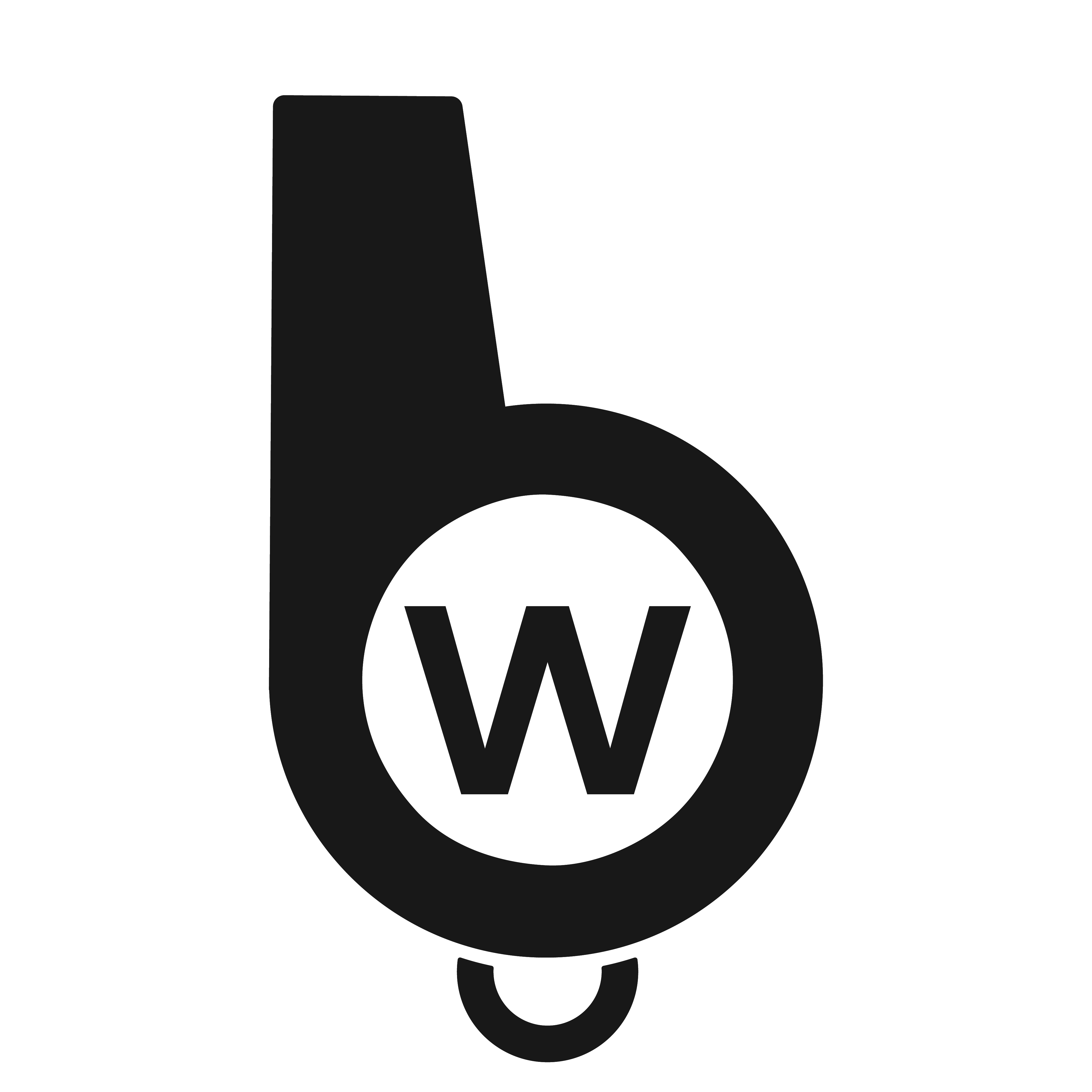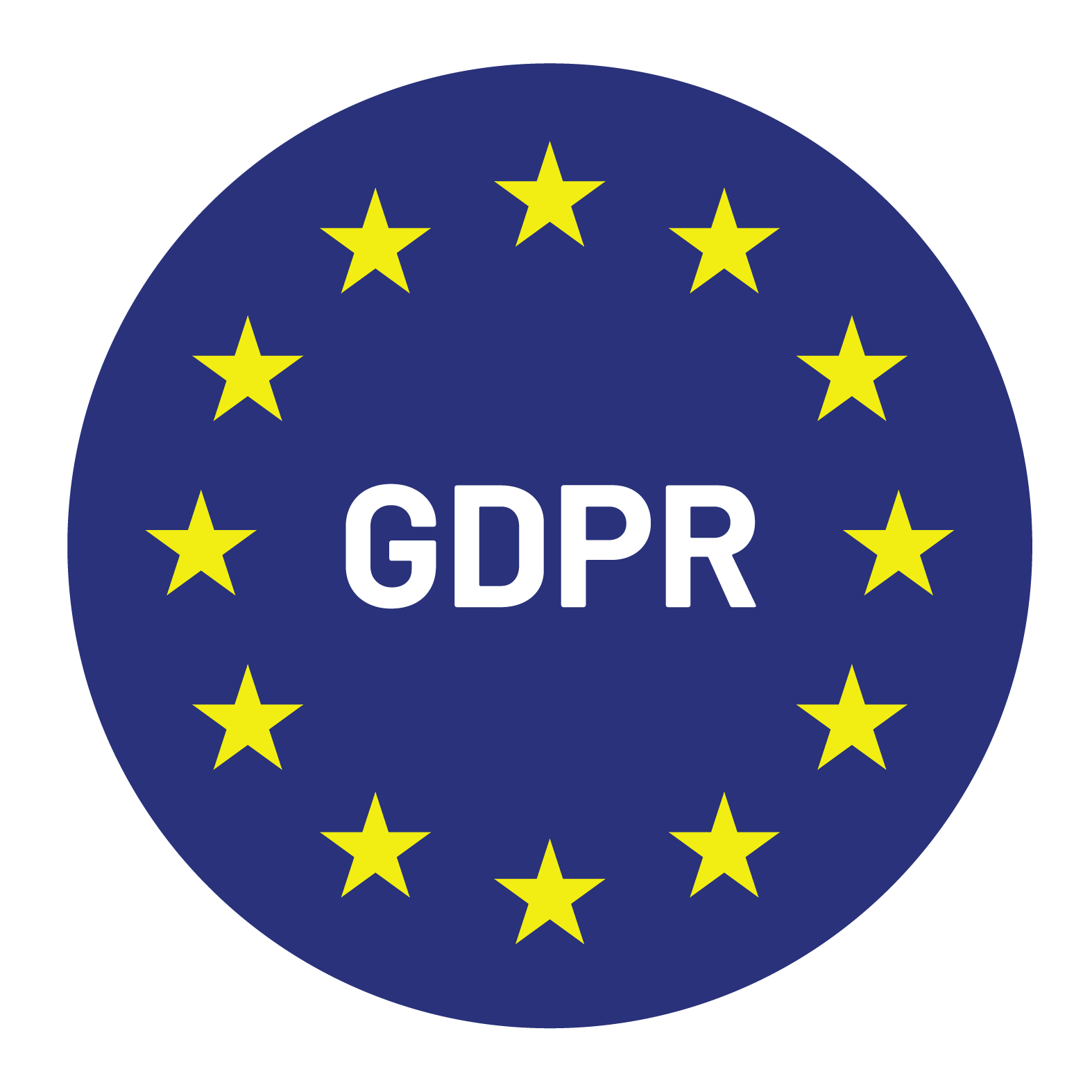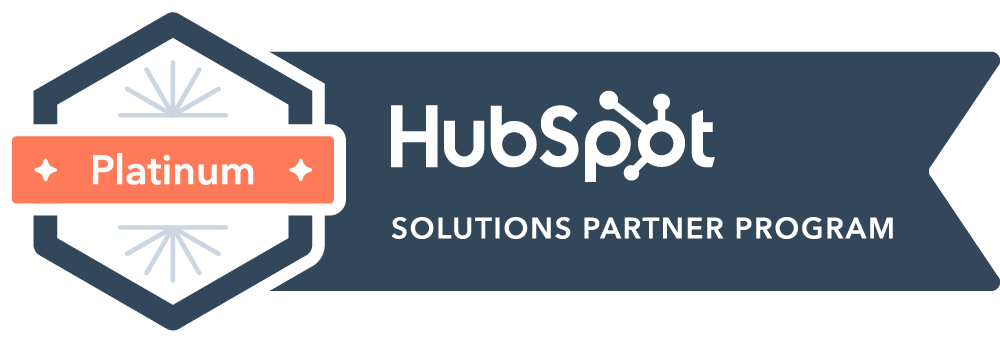How Appointment Generation Companies Fix a Failing B2B Sales Pipeline

Table of Contents Many B2B companies are pouring more into marketing budgets than ever, yet their sales pipelines remain worryingly thin. Ads bring traffic, webinars fill attendance sheets, and content downloads spike. But when the pipeline is reviewed at the end of the quarter, sales leaders see gaps that marketing can’t explain away. This is the reality of what some call a “pipeline drought.” Without enough qualified meetings, revenue forecasts slip, sales teams lose momentum, and customer acquisition costs rise. Appointment generation offers a way out. Unlike general lead generation, which often emphasizes volume, appointment generation focuses on producing qualified meetings that directly support sales outcomes. Done right, it bridges the gap between marketing efforts and closed revenue. For companies struggling with pipeline consistency, appointment generation companies provide a direct and measurable fix. Why Sales Pipelines Run Dry Sales pipelines fail for a number of reasons, and often the issue isn’t a lack of effort but a lack of structure. One common issue is over-reliance on inbound marketing. While inbound channels can produce strong results, they are rarely enough on their own to sustain growth. Leads from inbound often fluctuate, creating inconsistent sales activity. Another challenge is SDR turnover and burnout. Building an internal SDR team requires significant investment in hiring, training, and management. Yet many organizations face high attrition rates in these roles, leading to constant disruption and sunk costs. Lead qualification is another weak spot. Too many sales reps spend time chasing contacts who never fit the company’s ICP, which drains resources and undermines close rates. Poor sales-marketing alignment A further cause of pipeline problems lies in weak collaboration between sales and marketing. Marketing passes leads that may not be sales-ready, while sales teams grow frustrated by wasted time. When alignment breaks down, opportunities are lost in the gap. What Appointment Generation Companies Actually Do Appointment generation companies exist to fix these problems by focusing on the part of the pipeline that matters most: producing qualified meetings. It’s important to distinguish appointment generation from lead generation. Lead generation often focuses on top-of-funnel contacts and volume metrics. Appointment generation, on the other hand, is about securing meetings with decision-makers who fit the ICP and have shown buying intent. It prioritizes quality over quantity. These companies provide services such as cold calling, multi-channel outreach, lead qualification, and ICP targeting. By running structured outreach campaigns across phone, email, and social platforms, they ensure that prospects are approached consistently and professionally. Appointment generation companies also integrate directly with sales teams. They support pipeline development through CRM alignment, detailed reporting, and RevOps practices. This means that the meetings they set don’t just show up in calendars, they connect seamlessly to the company’s sales systems and goals. 6 Ways Appointment Generation Companies Rebuild Your Pipeline Consistent Meeting Flow Rather than chasing unpredictable inbound leads, appointment generation delivers a steady stream of qualified meetings. This consistency creates predictability in revenue forecasts and allows sales teams to focus on closing rather than prospecting. Faster Market Penetration When expanding into new markets, waiting for inbound leads to trickle in can delay growth. Appointment generation companies move quickly by targeting specific geographies, industries, or verticals, producing conversations in weeks rather than months. Higher Lead Quality Through structured qualification and ICP targeting, appointment generation ensures that sales teams are meeting with the right prospects. The result is higher conversion rates and shorter sales cycles. Multi-Channel Outreach Modern appointment generation is not limited to cold calls. It combines phone, email, and social touchpoints, increasing engagement rates and ensuring prospects are reached where they are most responsive. Reduced Sales Team Pressure Sales reps are most effective when they spend their time closing deals. Appointment generation removes the burden of top-of-funnel prospecting, allowing in-house teams to focus their energy on what drives revenue. Scalable Results Appointment generation companies can scale outreach efforts quickly. Instead of months of recruiting and training internal SDRs, companies gain instant access to established teams and tested processes. Real ROI of Appointment Generation Services The impact of appointment generation goes beyond filling calendars. It reshapes sales economics. By ensuring that SDR costs are shared across multiple clients, outsourced appointment generation reduces customer acquisition costs compared to building an internal team. Close rates also improve because reps spend their time in front of decision-makers rather than chasing low-quality leads. A stronger pipeline leads directly to higher win rates. Most importantly, appointment generation provides predictability. Consistent meeting flow allows companies to build accurate forecasts and align resources with revenue expectations. This stability is critical for scaling sustainably. When to Consider Partnering with an Appointment Generation Agency Not every company needs to outsource appointment generation, but there are clear indicators of when the time is right. If your pipeline is inconsistent or unpredictable, external support can stabilize it. If SDR hiring and training costs are draining resources without producing results, outsourcing provides a cost-effective alternative. Companies expanding into new markets often benefit most, as external teams can ramp quickly and build traction while internal teams focus on core markets. Finally, if your sales team needs results in weeks rather than months, appointment generation companies provide the speed that in-house efforts often cannot match. Don’t Let Your Pipeline Run Dry Appointment generation companies are not just about booking meetings, they are about restoring momentum to the sales pipeline. For B2B leaders, the difference between hitting revenue targets and missing them often comes down to the consistency of qualified meetings. Whistle has seen firsthand how targeted appointment generation transforms results. From stabilizing pipelines to opening new markets, structured outreach changes the trajectory of sales teams. For companies facing pipeline droughts, the message is clear: there is a direct and proven way to turn it around. TLDR Appointment generation solves one of the most pressing challenges in B2B sales: pipeline consistency. By producing qualified meetings through multi-channel outreach, outsourced SDR services reduce CAC, improve close rates, and provide predictable results. For companies struggling with pipeline droughts, appointment generation is the missing piece
7 Signs It’s Time to Partner with a B2B Appointment Setting Agency

Table of Contents In today’s hyper-competitive B2B SaaS landscape, building a predictable revenue engine isn’t about spray-and-pray email campaigns or crossing your fingers for warm referrals. It’s about systematically orchestrating high-quality sales conversations with the right decision-makers at companies that actually need what you’re selling. This disciplined approach commonly called appointment setting forms the foundation of modern sales development. When executed properly, it ensures your Account Executives spend their precious time closing qualified prospects instead of drowning in endless cold outreach. The challenge is managing appointment setting in-house is harder than most leaders expect. SDR turnover is high, sales tech goes underutilized, and pipelines fluctuate wildly. That’s where a B2B appointment setting agency comes in. How do you recognize when your internal approach has hit its ceiling and it’s time to bring in the experts? Here are 7 clear signs your sales team is sending you. Sign #1: Your Sales Pipeline is Inconsistent One quarter, your calendar overflows with demos and your AEs are crushing quotas. The next quarter feels like a ghost town. This destructive feast-or-famine cycle represents one of the clearest red flags that your appointment setting function is fundamentally broken. Why It Matters Inconsistent pipeline = inaccurate forecasting Reps miss quotas, causing revenue instability Investors and leadership lose confidence in growth projections Metrics to Watch Month-to-month demo fluctuation greater than 30% Reps booking less than 6–8 qualified meetings/month Low lead-to-meeting conversion rate from outbound campaigns How Agencies Solve This Appointment setting agencies run multi-channel campaigns at scale (email, LinkedIn, phone, events) to ensure a steady flow of qualified meetings. Unlike internal teams, they aren’t derailed by vacations, turnover, or bandwidth issues. Sign #2: High SDR Turnover is Hurting Performance The average SDR turnover rate is 39% annually (Bridge Group, 2024). In B2B SaaS, this number is often even higher. Every time an SDR leaves, you lose months of training, pipeline momentum, and morale. The Real Cost Impact Recruiting + onboarding: $10,000–$20,000 per SDR Ramp-up time: 3–6 months before full productivity Lost pipeline during the transition Why Agencies Win Here Agencies bring trained, experienced SDRs ready to perform You don’t carry the recruitment or retention burden Continuity: pipeline doesn’t stop when one SDR leaves 👉 Whistle provides fully managed SDR teams with 10-day deployment, eliminating months of hiring delays. Sign #3: Your Team Struggles with New Market Entry Expanding into fresh industries or geographic territories presents unique challenges that internal teams struggle to overcome. The messaging that resonates perfectly with your core market often falls completely flat when applied to new segments. Without deep market knowledge, outreach attempts feel generic and fail to open doors with decision-makers. Common Barriers Lack of market-specific messaging and ICP refinement No warm connections in new territories Struggling to adapt outreach to cultural/language nuances How Agencies Help Agencies work across industries and geos, bringing battle-tested playbooks They quickly identify decision-maker titles, pain points, and buying signals For global SaaS, multilingual SDRs ensure cultural alignment Sign #4: Your Cost Per Qualified Meeting is Too High Hiring SDRs isn’t cheap. Beyond salaries, you’re paying for management, tech stacks, training, and overhead. When you tally the full costs, the true cost per meeting often exceeds what an agency can deliver. Hidden In-House Costs Base salary + OTE: $70K–$90K annually Sales tools: $300–$500/month per rep Management overhead + enablement Ramp-up inefficiency Comparison: In-House vs Agency Cost Driver In-House SDR Team B2B Appointment Setting Agency Salary & OTE $70K–$90K per SDR Included in retainer Tech Stack $3–5K/year Included Ramp-Up Time 3–6 months 10 days (Whistle) Continuity Subject to turnover Guaranteed delivery Why Agencies Win Agencies leverage economies of scale—shared infrastructure, trained teams, and proven workflows—so your cost per qualified meeting is lower and more predictable. Sign #5: Your Sales Tech Stack is Underutilized Most SaaS companies invest heavily in sophisticated CRMs, email sequencing platforms, and data enrichment tools. Without proper implementation and ongoing optimization, these powerful systems become expensive digital shelfware that delivers minimal ROI. Common Challenges SDRs not trained on advanced automation features Dirty data clogging CRMs, leading to wasted outreach No integration between marketing automation and sales execution How Agencies Fix It Agencies ensure full utilization of tools like HubSpot, Outreach, and Apollo They maintain clean, enriched databases with human validation They integrate marketing + sales systems for seamless lead handoff 👉 Whistle specializes in HubSpot RevOps support, ensuring clients get maximum ROI on their tech stack. Sign #6: Your Team Lacks Specialized Outreach Skills B2B appointment setting in 2025 demands far more than traditional cold calling. Success requires sophisticated multi-channel orchestration combining personalized email campaigns, strategic LinkedIn engagement, skilled phone conversations, social selling techniques, and trigger event responses. Essential Skills for Today’s Market Deep personalization (account-level insights, trigger events) Conversational copywriting for emails & LinkedIn Skilled cold callers who can navigate gatekeepers Data research and enrichment expertise Why Agencies Excel Agencies hire and train SDRs exclusively for outbound mastery They adopt the latest best practices and tools across industries Global agencies bring language + cultural fluency Sign #7: You Need to Scale Quickly, But Can’t Hire Fast Enough When pipeline targets jump or your startup lands new funding, you may need to double your meeting volume in weeks, not months. Hiring and training SDRs simply can’t keep up. The Hiring Bottleneck Time to hire SDR: 1–2 months Ramp-up: another 3–6 months Risk: high attrition during the first year The Agency Advantage 10-day deployment: agencies spin up outbound programs immediately Scalability on demand: add or reduce SDR capacity as needed Flexibility: scale campaigns seasonally or by market priority 👉 Whistle helped a SaaS client triple their outbound pipeline in just 60 days after a funding round—something impossible with in-house hiring timelines. How to Choose the Right B2B Appointment Setting Agency Not all agencies are created equal. Here’s how to evaluate: Transparency: Weekly reporting on meetings booked and response rates ICP Alignment: Active collaboration on persona refinement and messaging optimization Multi-Channel Expertise: Coordinated email, phone, LinkedIn, and
How to Identify, Prevent, and Fix Leaks in Your SaaS Customer Acquisition Funnel

Table of Contents Customer acquisition efficiency determines how fast a SaaS company grows. You can have a strong product, a talented team, and rising spend on demand generation, but if your funnel leaks, growth stalls. The real danger is not simply low lead volume. It is the silent loss of qualified prospects who fall through cracks at different stages of the funnel. Research from Insight Partners finds that many SaaS companies experience falling conversion rates (especially MQL-to-closed-won) even as their marketing budgets grow. The goal is to help you strengthen your SaaS customer acquisition strategy by addressing the points where potential revenue disappears. What Do We Mean by a “Leaky SaaS Funnel”? A funnel leak occurs when potential customers enter your funnel but exit prematurely, often without a clear explanation. Unlike natural attrition, where some prospects simply will not convert by design, leaks point to avoidable friction or misalignment in your process. SaaS companies are particularly vulnerable because of long sales cycles, complex buying committees, and the common freemium-to-paid path. Each additional touchpoint introduces opportunities for prospects to lose interest or disengage. Addressing leaks is about identifying those friction points, preventing avoidable drop-offs, and ensuring your funnel works as an efficient system from first touch to revenue. Top-of-Funnel (TOFU) Leaks – Attracting the Wrong Audience Common Causes The top of the funnel is where awareness and initial interest are generated. Leaks here often come from poor targeting or weak messaging. Some of the most common issues include: Weak or unclear ideal customer profile (ICP). Targeting the wrong platforms or overinvesting in channels that do not bring quality traffic. Weak product-market fit that limits resonance. Emphasis on vanity metrics such as clicks or impressions without regard to conversion quality. Fixes for TOFU Leaks To correct these issues, SaaS companies must revisit the fundamentals. Refining ICPs and personas ensures campaigns target prospects who are genuinely aligned with the product. High-return channels such as SEO, LinkedIn, and strategic content partnerships should be prioritized over paid experiments that do not deliver. Trust-building elements like customer reviews and case studies help validate interest at this early stage. Finally, landing pages need constant testing to ensure clarity of message and strong calls to action. TOFU is about setting the right tone, so prospects who enter the funnel are those with real potential. Middle-of-Funnel (MOFU) Leaks – Losing Interested Prospects Common Causes At the middle stage, prospects have shown intent but often slip away due to friction or lack of nurturing. Causes include: Lengthy sign-up forms or complex demo scheduling. Weak or missing nurture workflows that fail to keep prospects engaged. Delays in sales follow-up or weak SDR handoffs. Overly complicated product explanations that confuse rather than clarify. Fixes for MOFU Leaks Reducing friction is the first step. Shorter forms, streamlined onboarding, and fast responses to demo requests reduce drop-off. Lead scoring helps prioritize which prospects require faster outreach, while tailored nurture sequences across email, in-app, and remarketing keep engagement high. For sales development representatives, training on value-led outreach is essential. Prospects at this stage want clarity and confidence, not generic pitches. By ensuring the MOFU experience feels smooth and personalized, SaaS companies retain momentum instead of losing qualified interest. Bottom-of-Funnel (BOFU) Leaks – Failing to Convert Trials and Demos Common Causes The bottom of the funnel should be the point where prospects see value and commit, but this stage is where many SaaS companies lose revenue opportunities. Common BOFU issues include: Poor onboarding or lack of clear guidance for new users. Usability challenges or difficulty demonstrating product value quickly. Pricing confusion or lack of clear ROI explanation. Misalignment between what sales promised and what the product delivers. Fixes for BOFU Leaks Effective onboarding makes or breaks trial-to-paid conversions. Interactive checklists, in-app prompts, and dedicated support resources reduce frustration. Case studies demonstrating measurable success reassure prospects that the value is proven, not theoretical. Transparent pricing, including A/B testing different structures, helps reduce confusion. Companies should also audit their sales process to ensure promises align with real product capabilities, preventing disappointment that causes churn before conversion. How to Detect Where Your SaaS Funnel Is Leaking Fixing leaks starts with identifying them precisely. A few proven methods include: Funnel analysis provides a stage-by-stage view of how prospects progress through acquisition. By tracking conversion rates from initial interest to signed customer, you can quickly pinpoint where the steepest drop-offs occur. If trial-to-paid conversion is consistently low, for example, that signals a BOFU issue requiring focused attention. Path analysis highlights the unexpected routes prospects take. Instead of following the funnel you designed, many users branch off in ways you did not anticipate. Seeing those paths helps identify friction points or confusing navigation that pulls users away from the intended flow. Heatmaps show how users interact with specific pages, from scrolling behavior to click frequency. They make it clear where calls to action are ignored or where visitors abandon a page entirely. This type of data is particularly useful for diagnosing TOFU leaks tied to landing pages or sign-up flows. Feedback surveys bring the customer’s voice directly into funnel optimization. A short exit survey can reveal frustrations you might miss in analytics, such as unclear pricing, a missing feature, or difficulty with the sign-up form. These qualitative insights help explain the “why” behind the numbers. Session replays provide the most granular view by allowing you to watch how real users behave inside your product or on your website. Unlike aggregate data, these recordings uncover subtle but powerful friction points, such as a confusing button label, an onboarding step that users consistently skip, or a feature that looks appealing but fails to deliver clarity. The data is rarely ambiguous. When a stage shows consistent and significant drop-off, that is where optimization should begin. The Business Impact of Funnel Leaks in SaaS Funnel leaks carry direct and indirect costs. On the financial side, they inflate customer acquisition cost (CAC) and extend the payback period. Operationally, they waste
10 Warning Signs Your B2B SaaS Marketing Strategy Lacks Proper Demand Generation

Table of Contents In 2025, B2B SaaS companies live and die by their ability to generate demand. Yet many teams still confuse demand generation with lead generation, focusing on vanity metrics like form fills and trial signups instead of building sustainable, high-quality pipeline. Demand generation problems often develop gradually, making them easy to miss until they’ve significantly impacted your pipeline. If your demand generation strategy isn’t working, you’ll feel it across your sales funnel from hig CAC to low conversion rates and frustrated SDRs chasing poor-fit leads. In this guide, we’ll learn 10 warning signs that your B2B SaaS demand generation strategy is failing and what you can do about it. Let’s dive in. Sign #1: Declining MQL to SQL Conversion Rates The MQL → SQL conversion rate is one of the clearest indicators of whether your demand generation is producing sales-ready leads. If marketing is handing off dozens (or hundreds) of MQLs each month, but only a small fraction convert into opportunities, something is broken. Healthy SaaS benchmarks suggest: 20–40% conversion for well-targeted MQLs Higher ACV SaaS companies often expect fewer, but higher-quality, SQLs Problematic indicators: MQL criteria too broad (e.g., counting every ebook download as a lead) Poor ICP definition → attracting unqualified traffic Weak lead scoring models ignoring buying signals SDRs not aligned with marketing qualification standards How to Fix It Tighten ICP definitions: focus on industry, company size, tech stack, budget Refine scoring models: add behavioral signals like intent data, product engagement SLA with sales: create a shared definition of what “qualified” means Regularly audit handoff quality with SDR feedback loops Sign #2: Over-Reliance on a Single Lead Generation Channel If more than 70% of your pipeline comes from just one channel (Google Ads, LinkedIn Ads, or outbound email), your strategy is vulnerable. Algorithms shift, ad costs spike, inboxes get noisier. When one channel falters, your entire funnel dries up. Recent data shows that B2B SaaS companies using three or more demand generation channels see 24% higher lead quality scores and 18% better customer acquisition costs compared to single-channel approaches. Problematic indicators: 70%+ of leads coming from a single source Significant pipeline impact when one channel underperforms Limited testing of new channels or tactics Over-dependence on paid advertising without organic growth How to Fix It Multi-channel approach: blend SEO, thought leadership, outbound, partnerships, communities Own the narrative: produce content that ranks organically and builds authority Use retargeting to connect paid + organic channels Test emerging platforms (Slack communities, podcasts, industry newsletters) Balanced demand gen ensures resilience when one channel underperforms. Sign #3: Poor Lead Quality Despite High Volume High lead numbers look good on dashboards, but if your SDRs complain about “junk leads” or if win rates are declining, you’re chasing the wrong prospects. Bad leads are costly: they waste SDR hours, clog CRMs, skew reporting, and frustrate sales teams. Problematic indicators: High lead volume but low conversion rates Sales team frequently disqualifies marketing leads Poor engagement on post-conversion communications Increasing cost per qualified lead despite volume growth How to Fix It Tighten targeting filters on paid campaigns (exclude small companies if targeting mid-market) Implement qualification frameworks (BANT, MEDDIC, CHAMP) Leverage intent data providers to prioritize buyers actively researching your category Use content gating selectively to attract serious prospects vs. casual readers Sign #4: Misalignment Between Marketing and Sales Teams Sales and marketing alignment is critical for effective B2B SaaS demand generation. Misalignment creates friction in the handoff process, leads to wasted opportunities, and can significantly impact conversion rates. Problematic indicators: Disagreement on lead quality standards Inconsistent messaging between marketing content and sales conversations Lack of shared goals and metrics Poor communication about prospect needs and objections How to Fix It Create Service Level Agreements (SLAs): Marketing commits to lead quality/volume Sales commits to response time and feedback loops Schedule weekly alignment meetings Share joint pipeline metrics instead of siloed KPIs At Whistle, we embed outsourced SDR teams into SaaS clients’ workflows, bridging sales-marketing gaps instantly. Sign #5: Lack of Clear Buyer Personas and Journey Mapping Effective B2B SaaS demand generation requires deep understanding of your target buyers—who they are, what challenges they face, and how they make purchasing decisions. Without clear buyer personas and journey mapping, your demand generation efforts become unfocused, leading to generic messaging that doesn’t resonate with prospects. Problematic indicators: Generic or outdated buyer personas Content that doesn’t address specific persona pain points Unclear understanding of the decision-making process One-size-fits-all messaging across all prospects How to Fix It Develop 3–5 detailed ICPs with firmographics, pain points, buying triggers Map the buyer journey: awareness (problem), consideration (solutions), decision (vendor choice) Create funnel-stage content: TOFU: SEO blogs, webinars MOFU: whitepapers, case studies BOFU: ROI calculators, competitor comparisons Sign #6: Content That Doesn’t Address Buyer Pain Points or Stages Content is the fuel of B2B SaaS demand generation, but only if it addresses real buyer needs at the right time. Generic, sales-focused content fails to build trust or guide prospects through their decision-making process. Effective demand generation content should educate, inform, and gradually build confidence in your solution. Problematic indicators: Low content engagement rates Sales team creates their own content because marketing content doesn’t resonate Content focuses primarily on product features rather than buyer problems Limited content variety across different journey stages How to Fix It Audit content library: map assets to funnel stages Fill gaps: if you only have bottom-funnel case studies, add top-funnel awareness guides Build pain-point content → e.g., “Why SaaS sales teams miss 40% of opportunities without intent data” Repurpose across formats: blog → LinkedIn carousel → video clip Educational, problem-focused content builds trust; sales-focused content converts. You need both. Sign #7: Ineffective Lead Nurturing Processes B2B SaaS sales cycles can extend 6-18 months, making lead nurturing essential for maintaining prospect engagement. Ineffective nurturing leads to prospect disengagement, increased unsubscribe rates, and missed opportunities. Companies with mature lead nurturing generate 50% more sales-ready leads at 33% lower cost. Problematic indicators: High unsubscribe rates
How to Pick the Right B2B Lead Provider For Your Business

Table of Contents Revenue growth doesn’t start with closing deals. It begins with having the right opportunities in the pipeline. For many SaaS and B2B companies, that means working with a B2B lead provider. The right partner can fill sales calendars with qualified meetings and open doors to markets that would otherwise take years to access. The wrong one, however, drains budget and time, leaving sales teams frustrated and revenue targets unmet. Choosing a B2B lead provider doesn’t need to be rushed. The market is full of options, from data vendors to full-service outsourced lead generation agencies. Each promises to deliver results, but the reality is more nuanced. This guide examines the different types of providers, what separates the best B2B lead generation companies from the rest, and the ten factors that matter most when selecting a partner. Whistle has worked with hundreds of SaaS businesses to refine their outbound strategies, and this blog brings that experience into a clear framework for decision-making. Types of B2B Lead Providers B2B lead providers generally fall into three categories. The distinctions matter because the model you choose should reflect your sales maturity, goals, and internal capabilities. Data providers sell access to contact lists, databases, and intent signals. They are cost-effective for teams that already have outbound sales capacity but need more contacts to work with. The risk is clear: poor data quality can leave sales teams chasing invalid emails or irrelevant titles. Appointment setting companies go a step further, booking meetings on your behalf. They specialize in cold calling, email outreach, and sometimes LinkedIn outreach, with the goal of passing confirmed appointments to your sales team. Their effectiveness depends on the quality of messaging, the targeting, and their ability to represent your brand in early conversations. Full-service sales development agencies deliver an end-to-end outbound function. They combine data, multi-channel outreach, SDRs, and sales technology into one solution. For businesses that want to scale quickly without building in-house, these agencies offer speed and expertise, though they require careful vetting to ensure alignment with your ICP and sales process. Key Benefits of Partnering with a B2B Lead Provider Working with a provider can shift your sales motion in ways that are difficult to achieve in-house. One of the most cited benefits is cost efficiency. Building an internal SDR team means months of recruitment, training, and management overhead. By contrast, outsourced lead generation services provide instant access to trained teams and established systems. The second advantage is speed. Ramp-up timelines are significantly shorter, with strong providers able to launch campaigns in as little as two weeks. This means quicker access to qualified conversations and earlier pipeline creation. Finally, technology and data are major differentiators. Leading B2B lead generation companies invest in intent data, enrichment tools, and multi-channel platforms that most businesses would not justify on their own. This combination often leads to measurable ROI. Industry benchmarks show outsourced lead generation delivering an average 3–5x return on investment when executed effectively. 10 Critical Factors to Consider When Choosing a B2B Lead Provider 1. Industry Expertise and ICP Alignment Not every provider understands the nuances of your sector. A SaaS company selling into enterprise IT requires different outreach than a fintech firm targeting mid-market CFOs. Look for providers with proven experience in your vertical and a clear process for refining your ICP and personas. 2. Lead Quality vs Lead Quantity Volume alone does not drive revenue. A hundred unqualified leads are less valuable than ten highly qualified ones. Strong providers measure quality through metrics like SQL acceptance rates and conversion into opportunities, not just the number of meetings booked. 3. Multi-Channel Outreach Capabilities A single-channel provider will rarely deliver consistent results. Buyers engage across phone, email, and social channels, often requiring multiple touches before responding. The best B2B lead providers integrate cold calling, email outreach, LinkedIn engagement, and ABM strategies into one motion. 4. Data Accuracy and Intent Signals Clean, validated data is essential. Outdated or incorrect information wastes SDR time and damages brand credibility. Advanced providers also integrate intent data, helping you prioritize prospects who are actively researching solutions in your category. 5. Technology Stack and Integrations Your lead provider should connect seamlessly with your CRM and marketing stack. Compatibility with systems like Salesforce or HubSpot ensures no leads fall through the cracks. Look for smart use of AI and automation for scale, but ensure technology supports, not replaces, quality human engagement. 6. Transparent Reporting and Metrics If a provider cannot clearly explain their KPIs, it is a red flag. At minimum, reporting should include cost per lead, SQL rate, and meeting-to-opportunity conversion. Transparency is non-negotiable, as vague reporting often hides weak results. 7. Pricing Models and ROI B2B lead providers use various pricing structures, from retainers to pay-per-lead or hybrid models. The most important step is calculating ROI. Look beyond cost per meeting and measure downstream impact: pipeline created, opportunities progressed, and revenue generated. 8. Contract Flexibility and Scalability Locking into a long-term contract with the wrong provider is a costly mistake. Flexible contracts allow you to scale up when results are strong or adjust when priorities change. The ability to scale quickly can be particularly valuable when entering new markets. 9. Client Testimonials and Case Studies A provider’s track record should speak through its clients. Case studies, client testimonials, and references validate whether they can deliver on promises. Be cautious of generic testimonials without context or measurable outcomes. 10. Cultural Fit and Communication Style Even the best operational model can fail if communication is poor. Your provider will often represent your brand in first-touch interactions, so alignment in tone and style matters. During discovery calls, assess not only their process but also how they interact with your team. Common Mistakes Businesses Make When Choosing B2B Lead Providers Many companies fall into predictable traps when selecting a provider. The first is chasing the lowest cost. Cheap providers may deliver large volumes of leads, but if those leads are unqualified, the
How to Align a B2B Appointment Setting Agency with Your Existing Sales Process

Table of Contents Appointment setting is one of the most overlooked parts of the sales process. It is often treated as a numbers game: more dials, more emails, more meetings. Yet for SaaS and B2B companies, the real value lies not in activity, but in the quality of appointments and how seamlessly they connect to the rest of the sales pipeline. That is why B2B appointment setting has become an essential function for companies looking to expand their reach and maximize sales efficiency. Outsourcing this function has grown common among B2B and SaaS companies. By tapping into outsourced appointment setting services, organizations gain immediate access to skilled SDRs, proven outreach methods, and ready-made infrastructure without the long ramp-up period of building in-house. However, outsourcing alone does not guarantee results. Poor integration between an appointment setting agency and internal sales teams can lead to duplicate outreach, wasted budget, inconsistent messaging, and missed opportunities. Understanding the Role of a B2B Appointment Setting Agency At its core, a B2B appointment setting agency provides three functions: prospecting, qualification, and appointment scheduling. These agencies identify the right prospects, qualify them against agreed criteria, and then secure meetings for account executives. Their role is not to close deals but to ensure sales teams spend time with the right people. When aligned properly, agencies complement internal SDRs and AEs rather than compete with them. Internal SDRs may focus on strategic accounts or specific segments, while outsourced SDR services can broaden reach into new markets or support rapid scaling. Together, they expand the top of the funnel and ensure opportunities flow steadily into the sales pipeline. It is also important to clarify the difference between lead generation and appointment setting. Lead generation casts a wide net, collecting names and contact details. Appointment setting goes further by qualifying prospects and securing confirmed meetings, making it far more directly tied to revenue outcomes. Key Challenges Companies Face Despite the clear value, many companies struggle with outsourcing because integration is overlooked. Misalignment between agency SDRs and in-house sales teams can create friction. If goals are unclear, both sides may chase different priorities, leading to inconsistent results. Poor CRM data handoffs are another common issue. If agency-sourced appointments are not properly logged, tracked, and visible in the CRM, opportunities can easily be lost. Similarly, messaging inconsistencies can damage credibility. If prospects receive outreach that does not match the company’s tone or value proposition, trust is eroded before the AE even enters the conversation. Fragmented outreach is particularly damaging. Picture a scenario where an internal SDR and an agency SDR both contact the same account with different messaging. The result is confusion for the prospect and wasted effort for the sales team. 6 Steps to Seamlessly Integrate a B2B Appointment Setting Agency Step 1 – Define Shared Goals and KPIs Alignment begins with clarity. Both the agency and your internal team must agree on what constitutes a qualified appointment. Defining KPIs around metrics like sales-qualified leads, meetings completed, and pipeline contribution prevents confusion and ensures everyone is measured against outcomes that matter. Revenue impact, not activity volume, should be the guiding metric. Step 2 – Map the Buyer Journey Together No agency can succeed without a full understanding of your ideal customer profile, personas, and buying triggers. Mapping the buyer journey together ensures that outsourced SDRs know not only who to target but also how those prospects move through your sales cycle. For example, a SaaS company selling into enterprise IT must make clear which decision-makers matter and how long the buying process typically runs. Without this shared knowledge, even the best appointment setting services will produce mismatched opportunities. Step 3 – Establish a Unified Messaging Framework Consistency in outreach is non-negotiable. Agencies should adopt your brand voice and messaging so prospects receive a coherent experience across email, phone, and LinkedIn. Creating a unified messaging framework ensures that SDRs do not just repeat a script but adapt it while staying true to your value proposition. Testing personalization approaches across channels can help identify what resonates most, but the foundation must always reflect your brand. Step 4 – Integrate Technology and CRM Systems Technology is where alignment often breaks down. Appointments must flow directly into your CRM, whether that is Salesforce, HubSpot, or another system. Manual entry creates gaps and wastes time, while automated syncing ensures AEs have immediate visibility. Proper CRM integration also enables accurate reporting on show rates, conversion rates, and pipeline value. Without this visibility, leadership cannot measure ROI or identify where improvements are needed. Step 5 – Create a Feedback Loop Between SDRs and AEs The handoff between SDRs and AEs is not a one-way street. Weekly feedback sessions are critical for refining lead quality and improving outreach. When AEs share insights about what worked in calls and what did not, agency SDRs can adjust their qualification and messaging accordingly. Over time, this feedback loop strengthens alignment and improves appointment quality. Step 6 – Measure, Optimize, and Scale Integration is not a set-and-forget process. Regular performance reviews ensure the agency continues to deliver value. Tracking metrics like show rates, conversion rates, and pipeline generated provides a clear picture of impact. With these insights, companies can shift budgets, adjust strategies, and expand into new markets. A properly aligned outsourced SDR service does not just fill the pipeline; it scales with your business. Benefits of Proper Integration When integration is done right, the results are clear. A consistent pipeline flow eliminates the feast-or-famine cycles that strain sales teams. Reduced friction in the sales cycle means AEs can focus on advancing deals rather than chasing prospects. Appointment quality improves, leading to higher conversion rates and stronger ROI. Beyond direct revenue impact, alignment also enhances collaboration between sales and marketing, ensuring everyone works toward the same goals. Mistakes to Avoid When Working with an Appointment Setting Agency Companies often undermine their own outsourcing efforts by treating the agency as a vendor rather than a partner. Without proper onboarding
15 Critical Differences Between Demand Capture vs. Demand Generation in B2B SaaS Marketing

Table of Contents B2B SaaS marketing teams often throw around the terms demand generation and demand capture as if they’re interchangeable. They’re not. In fact, confusing the two can be one of the most expensive mistakes a SaaS go-to-market team makes. When your strategy is built on the wrong motion, you either spend big on ads that don’t scale, or you create great content that never converts. SaaS companies that know how to balance both see stronger pipeline velocity, lower CAC, and healthier long-term growth. This breakdown covers 15 critical differences between demand capture and demand generation in SaaS marketing, with a focus on balancing strategy, smart investment, and long-term impact. By the end, you’ll know how to balance the two, where to invest, and how they fuel long-term growth when done right. What are demand generation and demand capture in B2B SaaS? Demand Generation Demand Capture What is it? Demand generation is about building awareness, trust, and future pipeline. It’s a top- and mid-funnel motion where your brand earns attention before buyers are in-market. Demand capture is the flip side of the funnel. Instead of creating awareness, you’re targeting buyers who are already in-market and actively searching for solutions. Goal Create mindshare and brand equity so that when your buyer is ready to purchase, your company is top of mind. Turn active intent into pipeline as fast as possible. Examples Content marketing, SEO, thought leadership, community building. Google Ads, review sites, retargeting, lead forms. Differences Between Demand Capture and Demand Generation in B2B SaaS Let’s break it down difference by difference. 1. Funnel Stage Focus Demand Generation: Top and middle funnel (awareness, education, trust). Here you’re introducing your category, educating buyers about problems they might not even know they have, and establishing your brand as the go-to resource. You’re playing the long game, building relationships with prospects who might not buy for 6-18 months. Demand Capture: Bottom funnel (buyers actively evaluating). These prospects already know they have a problem, understand the solution category, and are comparing vendors. They’re ready to buy, you just need to convince them you’re the best choice. The sales cycle is compressed because the education phase is already complete. 2. Time Horizon Demand Generation: Long-term — 6 to 12 months+ to see ROI. Demand generation is an investment in future pipeline. The content you create, the brand awareness you build, and the thought leadership you establish compound over time. Demand Capture: Short-term — pipeline in weeks or months. When someone searches for “best CRM software” on Google, they’re ready to buy now. Your Google Ad can generate a demo request within hours of launch. The ROI is immediate but doesn’t compound the same way. 3. Target Audience Demand Generation: The entire addressable market, even those unaware of the problem. You’re casting a wide net to educate prospects who might not even realize they need your solution. This includes people who are still using manual processes, outdated tools, or haven’t recognized the pain points your product solves. Demand Capture: In-market buyers already searching for solutions. These prospects have done their homework. They understand the problem, know solutions exist, and are actively evaluating options. Your job is to get in front of them at the moment they’re ready to make a decision. 4. KPIs Tracked Demand Generation: Engagement, MQLs, webinar sign-ups, brand lift, content downloads, social shares, organic traffic growth. These metrics focus on reach, engagement, and relationship building. You’re measuring whether people find your content valuable and are willing to engage with your brand over time. Demand Capture: Pipeline, CAC, win rates, revenue, conversion rates, cost per SQL, time to close. These are hard revenue metrics that directly tie to business outcomes. Every dollar spent should generate measurable pipeline within a defined timeframe. 5. Channel Mix Demand Generation: SEO, LinkedIn organic, podcasts, blogs, community forums, events, PR, brand partnerships. These channels are about building authority, sharing knowledge, and becoming part of industry conversations. They require consistent investment and patience but create compound returns. Demand Capture: Google Ads, review sites (G2, Capterra), retargeting, LinkedIn ads, and intent data platforms. These channels intercept prospects who are already in buying mode. They’re more expensive per impression but generate higher conversion rates. 6. Content Type Demand Generation: Educational guides, industry reports, ebooks, thought leadership articles, webinars, podcasts. This content builds trust and positions your company as an expert. It answers broad questions like “How do you know if you need marketing automation?” rather than “Why choose our marketing automation tool?” Demand Capture: Product comparisons, pricing pages, case studies, free trials, ROI calculators, vendor comparison guides. This content helps prospects make buying decisions. It’s product-focused and designed to convert prospects who already understand their need. 7. Budget Allocation Demand Generation: Higher upfront investment with slower payback. You might spend $50k on a research report that generates leads over 18 months. The cost-per-lead looks expensive initially, but improves dramatically over time as the content continues generating organic traffic and social shares. Demand Capture: Immediate ROI-driven spend with predictable returns. A Google Ads campaign might generate $3 in pipeline for every $1 spent within 30 days. The ROI is immediate and measurable, but it doesn’t compound, you have to keep spending to maintain results. 8. Sales/Marketing Alignment Demand Generation: Marketing nurtures prospects through multiple touchpoints before passing to sales. The lead nurturing process might involve 6-12 touchpoints over several months. Sales receives prospects who are educated about the problem and solution category, but may need additional qualification. Demand Capture: Sales follows up directly after hand-raise with minimal delay. These prospects are ready for immediate sales engagement. The handoff needs to happen within hours, not days, because competitors are also targeting the same in-market buyers. 9. Technology Tools Demand Generation: Marketing automation platforms, content management systems, social media schedulers, brand monitoring tools, survey platforms, event management software. These tools focus on content creation, distribution, and engagement measurement across long buyer journeys. Demand Capture: Intent data platforms, lead capture forms, CRM
The Ultimate Guide to B2B SaaS Demand Generation in 2026

Table of Contents B2B SaaS demand generation in 2026 is no longer about producing more leads but about creating qualified demand that sustains revenue growth while customer acquisition costs (CAC) continue to climb. Many SaaS leaders now recognize that lead volume alone does not equal success. Marketing must influence earlier in the buying cycle, sales must engage with sharper focus, and revenue leaders must ensure tighter alignment across the funnel. We’re examining what demand generation in B2B SaaS looks like in 2026, how it differs from lead generation, and the strategies defining high-performing companies. From AI-powered personalization to ABM-driven targeting and data-backed measurement, we will break down the full picture. Finally, we will look at benchmarks, pitfalls to avoid, and how Whistle supports SaaS companies in building sustainable demand engines. What is demand generation in B2B SaaS? Demand generation is the integrated set of strategies and tactics used to build qualified interest across the entire SaaS buyer journey. Unlike lead generation, which is often transactional and volume-driven, demand generation focuses on creating market awareness, guiding buyers through consideration, and shaping intent that results in pipeline growth. Where lead generation might hand over a contact form from an ebook download, demand generation works to ensure that by the time the prospect reaches sales, they understand the product, see its value, and are engaged with the brand. The distinction is important. As SaaS markets mature and competition grows, generating leads without demand often results in poor conversion rates, inflated CAC, and misalignment between marketing and sales. The macro context: slowing growth, rising CAC, competitive SaaS market Growth rates in SaaS have slowed compared to the last decade. With more vendors in every category, customer acquisition costs are increasing, payback periods are stretching, and efficiency is under scrutiny. Investors are demanding predictable revenue engines, not just rapid top-line expansion. Demand generation in 2026 must reflect this reality. It must create measurable impact across the funnel, align with revenue objectives, and balance both marketing-driven influence and sales-driven engagement. How the B2B SaaS Buyer Journey Has Evolved Buying software has become more complex. Gartner reports that the average purchase decision now involves 6 to 10 decision-makers. These committees often span IT, finance, operations, and business unit leaders, each with different priorities. At the same time, buyers complete 60–70% of their research independently before engaging a vendor. They rely on peer reviews, analyst reports, thought leadership, and dark social channels where influence is harder to track. This means demand generation strategies in 2026 must go beyond visible touchpoints. The “dark funnel”, activity happening in communities, Slack groups, and private conversations, plays a critical role in shaping decisions. Companies that ignore these hidden interactions risk being left out of buyer consideration altogether. Core Components of B2B SaaS Demand Generation in 2026 ICP and Persona Development The foundation of demand generation is a well-defined Ideal Customer Profile (ICP). But in 2026, this is no longer about static firmographics. Leading SaaS companies build data-rich personas that integrate intent signals, behavioral data, and firm-level insights. For example, identifying a company that recently hired a Head of RevOps, combined with signals showing increased interest in Salesforce integrations, can signal strong buying intent for a SaaS solution in that space. These insights allow for precise targeting and higher conversion potential. Full-Funnel Content Strategy Content remains central, but it must be built to map directly to the buyer journey. At the awareness stage, webinars, podcasts, and thought leadership establish credibility. At the consideration stage, case studies and ROI-focused assets guide evaluation. At the decision stage, interactive demos and proof-of-concept offers help finalize purchase decisions. A content pipeline in 2026 must balance formats, channels, and depth to influence across multiple stakeholders. Multi-Channel Execution No single channel is sufficient. Effective SaaS demand generation uses a multi-channel approach that integrates SEO, LinkedIn campaigns, paid search, account-based marketing, and participation in dark social conversations. Each channel reinforces the others, creating consistent visibility across the buyer journey. AI-Powered Personalization and Automation AI is reshaping how personalization works in SaaS demand generation. Predictive scoring models identify which accounts are most likely to convert, while AI-driven tools adapt messaging to match prospect behavior in real time. This allows companies to scale personalization without sacrificing relevance. Automation also reduces inefficiencies, freeing sales and marketing teams to focus on strategic engagement instead of repetitive tasks. Intent Data and ABM-Driven Targeting Account-Based Marketing (ABM) is no longer optional for SaaS companies selling into mid-market or enterprise accounts. In 2026, intent data powers ABM programs by identifying which accounts are actively researching relevant topics. This ensures marketing budgets are spent on companies with genuine buying interest rather than broad, low-return outreach. Data-Driven Measurement and Optimization Measurement is where many demand generation strategies falter. SaaS companies must track beyond vanity metrics like impressions or downloads. The focus in 2026 is on pipeline velocity, CAC payback, and attribution models that reveal which campaigns are driving revenue impact. With this level of visibility, marketing leaders can reallocate budget with confidence, align with sales teams, and prove ROI to stakeholders. SaaS Demand Generation Strategy Framework: 90-Day Roadmap Days 1–30 – Foundation The first 30 days focus on establishing the foundation. This includes ICP workshops to refine targeting, a full audit of the tech stack to ensure systems can support advanced attribution, and development of a content pipeline aligned to buyer stages. Days 31–60 – Measurement and Attribution The next 30 days emphasize execution and measurement. Multi-channel campaigns are launched, early performance data is tracked, and attribution models are tested to ensure reliable insights. This is also when marketing and sales alignment checkpoints are scheduled to calibrate. Days 61–90 – Optimization and Scale In the final stage, budgets are reallocated to top-performing campaigns, ABM programs are scaled to new target accounts, and sales-marketing alignment is strengthened. The outcome should be a measurable pipeline lift with improved efficiency and better visibility across the funnel. Budgets and Benchmarks for B2B SaaS Demand Generation Most
15 Critical Questions to Ask Appointment Generation Companies

Table of Contents Your sales pipeline is only as strong as the meetings that feed it. That’s why appointment generation companies have become a critical growth lever for B2B organizations in 2025. If you’re scaling a SaaS startup or expanding into new markets, the right outsourced SDR partner can help you tap into predictable pipeline and revenue. But the challenge is not all appointment setting vendors are created equally. Many promise the world, but only a handful consistently deliver qualified meetings that convert into revenue. Choose poorly, and you risk wasted spend, missed targets, and a frustrated sales team that loses confidence in outsourced solutions altogether. This checklist will give you a structured framework to evaluate appointment generation companies so you can separate the real partners from the pretenders. Use these 15 questions to conduct thorough due diligence and make an informed decision that drives measurable results for your sales organization. Performance and Results Questions 1. What are your typical conversion rates from prospect to qualified meeting? A credible vendor should be transparent about conversion rates and explain how they vary by industry. In SaaS, for example, expect 2–5% conversion on cold outreach done well. Professional appointment generation companies track these metrics religiously and can provide benchmarks based on your specific market segment. Red Flags: Vendors quoting unrealistic conversion rates (e.g., 10%+ consistently across industries). Refusing to give benchmarks or hiding behind “it depends.” No clarity on what they define as a “qualified meeting.” 2. How do you measure appointment quality, and what metrics do you track? The best appointment setting services track not just volume but quality, show rates, opportunity conversion, and eventual pipeline impact. They should also have clear definitions for what constitutes a qualified meeting versus a general interest conversation. This distinction is crucial for aligning expectations and measuring true performance. Red Flags: Focus only on vanity metrics (calls made, emails sent). Lack of data on show rates or opportunity conversion rates. Vague responses like “we get you meetings” without defining quality standards. 3. Can you provide case studies specific to my industry or similar companies? Look for proof of success in your vertical. If you’re in cybersecurity, can they show results with similar SaaS providers? Case studies and verified references separate proven vendors from those still experimenting. Red Flags: No industry-specific examples. Reluctance to provide references or connect you with existing clients. Overly generic case studies with no measurable ROI data. Team Structure and Quality Questions 4. Who will be handling my account, and what is their experience level? A dedicated account manager or team is essential. Shared SDR pools often lead to diluted focus and lower results. Ask to meet the team that will represent your brand. Red Flags: No dedicated account manager — instead, a “shared pool” of SDRs. Inability to introduce you to the team pre-contract. High reliance on junior SDRs with no oversight. 5. How are your SDRs recruited, trained, and retained? Appointment generation relies heavily on SDR quality. Vendors with structured training, coaching, and low churn will deliver consistency. High turnover often signals deeper issues. Red Flags: No formal training program beyond “basic onboarding.” High turnover rates (SDRs churning every 3–6 months). Outsourced SDR teams without any performance coaching or QA process. 6. What is your team’s geographic location and language capabilities? Global buyers expect cultural alignment and language fluency. Onshore teams may suit enterprise accounts, while nearshore/offshore can be cost-effective if quality is maintained. Red Flags: Focus only on vanity metrics (calls made, emails sent). Lack of data on show rates or opportunity conversion rates. Vague responses like “we get you meetings” without defining quality standards. Process and Methodology Questions 7. What is your approach to prospect research and list building? Great vendors don’t just buy lists — they use human validation, intent data, and ICP alignment. Ask how they source and qualify contacts. Red Flags: Reliance on one channel only (e.g., cold calling without email or LinkedIn support). Inability to adapt to your ICP’s channel preferences. Poor compliance practices (spammy email domains, non-compliant data use). 8. How do you develop and iterate on outreach messaging? B2B appointment setting requires ongoing optimization. Look for vendors that A/B test subject lines, cadences, and personalization strategies. Red Flags: “One-size-fits-all” templates are used across all clients. No A/B testing or personalization beyond a first name. No clear strategy for refining messaging over time. 9. What outreach channels do you use? (phone, email, LinkedIn, etc.) Multi-channel campaigns convert better. A strong vendor should integrate cold calling, email outreach, and social selling into one unified approach based on your buyer preferences and industry norms. Red Flags: Reliance on one channel only (e.g., cold calling without email or LinkedIn support). Inability to adapt to your ICP’s channel preferences. Poor compliance practices (spammy email domains, non-compliant data use). Technology and Integration Questions 10. What technology stack do you use for appointment setting? Ask about sequencing platforms, enrichment tools, and analytics dashboards. Leading agencies leverage tools like Salesloft, Outreach, or HubSpot Sales Hub. Red Flags: Outdated or manual tools for sequencing and tracking. No use of analytics dashboards for transparency. Reliance on free/low-tier tools with limited functionality. 11. How will you integrate with our existing CRM and sales tools? Smooth integration ensures your team has visibility into every touchpoint. If you use Salesforce or HubSpot, make sure the vendor has proven experience in those ecosystems. Note: Whistle is a HubSpot Platinum Partner, ensuring seamless CRM alignment. Red Flags: No direct CRM integration — requiring manual data entry. Lack of experience with major platforms (Salesforce, HubSpot, Pipedrive). Ignoring compliance/security standards during data transfer. Pricing and Contract Questions 12. What pricing models do you offer and what’s included? Compare retainers, pay-per-performance, or hybrid pricing. Each has pros and cons — retainer models provide consistency, while performance-based models tie incentives directly to results. Red Flags: Hidden costs for essential services like list building or reporting. Only one pricing
7 Ways Appointment Generation Companies Transform Your Sales Process

Table of Contents Time is your most valuable currency, and the more of it your sales team spends chasing unqualified prospects, the less they have for closing deals that matter. That’s where appointment generation companies come in. They are specialized partners who handle the heavy lifting of prospecting, qualifying, and booking meetings with decision-makers who want to talk to you. According to HubSpot’s State of Sales report, 40% of salespeople say prospecting is the most challenging part of their job, yet it consumes nearly 21% of their day. For fast-growing startups and scaling enterprises alike, working with an appointment generation partner can mean the difference between a sluggish pipeline and a revenue engine firing on all cylinders. Here’s how they transform your sales process from end to end: 1. They Turn Cold Leads Into Warm Conversations Your sales team’s biggest bottleneck isn’t closing, it’s starting the right conversations. Appointment generation services focus entirely on warming up prospects before they land in your sales reps’ calendars. The average B2B buyer is 57% of the way through their purchasing decision before they even speak to a sales rep, according to Gartner research. Professional appointment setters understand this reality and use sophisticated nurturing sequences to engage prospects across multiple touchpoints before scheduling meetings. Instead of handing off cold names from a spreadsheet, these companies qualify prospects using personalized outreach across phone, email, and LinkedIn. They leverage behavioral data, intent signals, and social proof to create meaningful connections with decision-makers. The result? Your sales team walks into meetings where the buyer already knows who you are, understands your value proposition, and has a genuine interest in exploring a solution. 2. They Build a Consistent Top-of-Funnel Flow Feast-or-famine prospecting is a growth killer. One month your reps are chasing 20 hot leads, the next month they’re scrambling for anyone to talk to. B2B appointment setting companies solve this by delivering a steady stream of qualified meetings every week. This consistency is crucial for several reasons. It allows for predictable revenue forecasting, which is essential for growth planning and investor confidence. It keeps your sales team in a closing mindset rather than a hunting mindset. When reps know they have a full calendar of qualified prospects, they can focus on preparation, relationship building, and deal advancement rather than scrambling for their next conversation. Professional appointment generation companies use systematic approaches to ensure consistent output. They maintain healthy prospect pipelines, implement standardized qualification frameworks, and use performance analytics to optimize their processes continuously. This systematic approach eliminates the unpredictability that plagues most internal prospecting efforts. 3. They Unlock Precision Targeting You Can’t Replicate In-House Finding the right buyers isn’t about buying a generic contact list. Leading sales appointment generation providers use advanced data tools, intent signals, and human research to identify prospects who match your ICP (Ideal Customer Profile) and are in-market now. Modern appointment generation companies leverage sophisticated technology stacks that include intent data platforms, social selling tools, and AI-powered personalization engines. They combine these technological capabilities with human insight to create targeting precision that’s difficult to achieve with internal resources. They also segment by vertical, job title, company size, technographic data, and even behavioral cues, ensuring your message lands with the right person at the right time. This multi-dimensional targeting approach significantly improves response rates and meeting quality compared to broad-based prospecting efforts. 4. They Shorten the Sales Cycle Every extra touchpoint between “hello” and “closed deal” adds friction. Lead generation and appointment setting services compress that cycle by removing early-stage roadblocks and ensuring prospects enter your sales process with proper context and qualification. The Sales Benchmark Index reports that companies with strong qualification processes see 28% shorter sales cycles compared to those with weak qualification. Professional appointment setters excel at this qualification process because it’s their core competency. Because the prospect has been qualified, informed, and engaged before your sales rep steps in, you can often skip unnecessary discovery calls and move straight to demos or proposals. This acceleration doesn’t just save time, but it also increases close rates by maintaining momentum and buyer engagement throughout the process. 5. They Integrate With Your Sales Tech Stack The best outsourced appointment setting teams don’t operate in isolation — they plug directly into your CRM, sales engagement platform, and reporting dashboards. This integration is crucial for maintaining visibility and ensuring seamless handoffs between prospecting and closing activities. Modern appointment generation companies are experienced with leading sales technologies including HubSpot, Salesforce, Outreach, SalesLoft, and dozens of other platforms. They understand how to maintain data hygiene, create proper lead scoring, and establish automated workflows that support your sales process. 6. They Help You Scale Without Hiring Headaches Hiring and training SDRs is expensive and time-consuming. The average cost to recruit and onboard a new SDR exceeds $15,000, and that’s before considering the 3-6 month ramp time required to reach full productivity. Even worse, SDR churn rates can be as high as 39% annually according to Bridge Group research, which means you’re constantly in a cycle of recruitment and onboarding. With an outsourced appointment generation partner, you get an experienced team up and running in weeks — without the overhead, management, and HR challenges of building it in-house. These teams come pre-trained with proven methodologies, established workflows, and refined scripts that have been tested across multiple clients and industries. 7. They Give Your Sales Team Back the Time to Sell Your highest-value salespeople should be closing deals, not chasing unresponsive leads. Research from CSO Insights shows that top-performing sales organizations spend 65% more time in front of customers compared to underperforming ones. By outsourcing prospecting and qualification, you free your sales team to focus on: Running high-impact demos and discovery conversations Nurturing strategic accounts and building executive relationships Negotiating and closing larger, more complex deals Providing post-sale support that drives expansion and referrals The impact compounds over time — more deals per rep, higher average deal size, and stronger win


